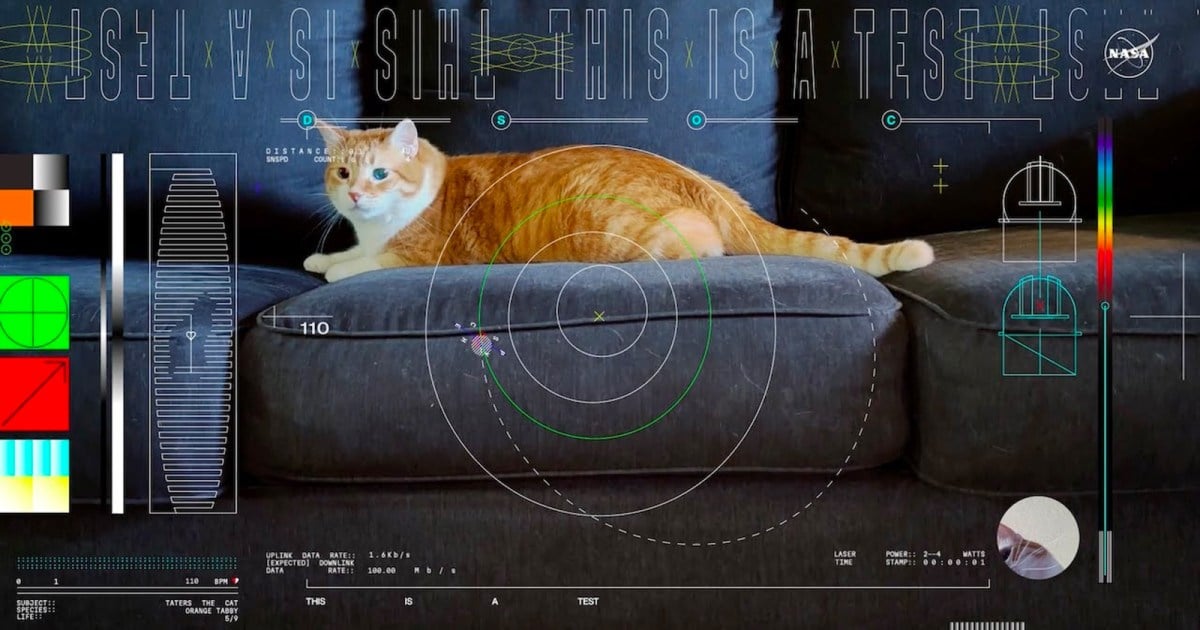Finally, the singularity has happened.
As is tradition. The first image transferred over the internet-precursor was also a cat picture.
Hah, that’s interesting. I tried looking up to see if that’s true, but I’m not finding any reliable sources, only sites and articles talking about the first message sent on ARPANET.
I imagine the first image file would’ve come well after the first text transmission, and would’ve required the development of a binary file transfer protocol. Maybe they’re talking about XMODEM and the BBS era, before those BBSes were eventually networked onto the internet.
Eventually we will attain our ultimate goal of transferring cats
Catapults already exist.
You have to keep the image intact though.
Work continues on the Trebuchat.
What the fuck was the cat doing that far away?
It’s a cat. It got curious about the inner workings of a satellite and stayed there past liftoff to investigate. And now it’s acting silly in front of the camera in the hope that the servant monkeys back on the ground can figure out how to send it a zero-G litterbox and a bag of Cat Chow.
(/s, of course.)
Article has your answer:
To test the potential of optical systems to revolutionize deep space communication, NASA incorporated the Deep Space Optical Communications (DSOC) experiment into Psyche, a mission to study a distant metal asteroid up close
They keep reiterating “faster, faster”. But the discussion is “laser” vs. “radio”.
Surprise: both travel at the speed of light. Both are the same speed.
Hmmm.
Are they afraid of having to explain “bandwidth”?
When talking communication, most people think of the speed with which a unit quantity of information is transmitted, not the latency of that transmission.
Referring to bandwidth as the speed of a communication system is pretty normal, even for people who know how to use the term bandwidth.people think of […] not the latency of that transmission.
And when that latency goes up from a few millis (from google to you) to, let’s say, 10 minutes (from mars to earth), then they would start to notice it :)
Oh, certainly. But common language has a term for high latency already, it’s just not speed related. Everyone knows about a laggy connection on a phone or video call.
Fun fact: TCP has some implicit design considerations around the maximum cost of packet retransmission on a viable link that only works on roughly local planetary scale.
When NASA started to get out to Mars with the space Internet, they needed to tweak tcp to fit retransmission being proportionally much more expensive and let connections live longer before being “broken”.True, but with the speed of light being constant as far as we know worrying about it is sort of a moot point
On the ground, we are also talking about fast internet, not about internet with “really wide bandwidth”
Laser clearly has better bandwidth then radio in most cases right?
Higher frequencies = smaller wavelengths = ability to pack more information into the same wave.
That’s why phones started using the very high upper microwave bands for 5G.
Right.
It is how “fast” they can transfer x amount of information. Not how fast the material being used to encode information can move through space.
That’s like saying that a Camaro isn’t any faster than a PT Cruiser because the law says 65mph.






